#dutch east indies
Explore tagged Tumblr posts
Text

SUPERMARINE SPITFIRES
#ROYAL AIR FORCE#December 1944.#No. 452 Squadron#Sattler Airfield#Darwin#NT#Morotai#Dutch East Indies#Supermarine Spitfires#WWII#RAF
63 notes
·
View notes
Text

(Bataljon Infanterie V, KNIL)
17 notes
·
View notes
Text
colonialism ended they might live and happy ever after at keboen djati
13 notes
·
View notes
Text
Short Introduction to Rear Admiral Karel Doorman! (In het Engels en Nederlands)
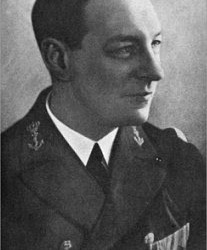
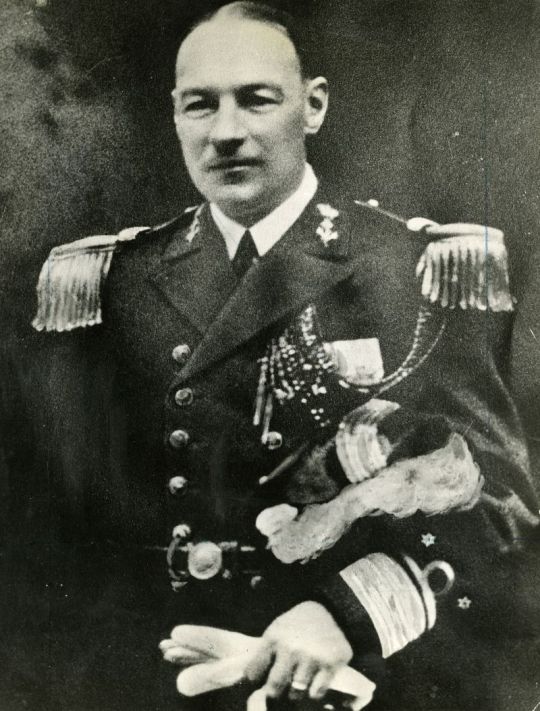
Prefacing this by mentioning who he is,
Karel Doorman is a Dutch Rear Admiral, later acknowledged as an Admiral. He was one of the most competent Admirals of the Dutch Naval forces, hence why he was selected to lead the battle of Java Sea.
Karel Doorman was een Nederlandse schout-bij-nacht, later erkend als admiraal. Hij was een van de meest bekwame admiraals van de Nederlandse marine, en daarom werd hij uitgekozen om de Slag in de Javazee te leiden.
Despite his significant role, Doorman remains a lesser-known figure from the Second World War, but he holds a very special place in my heart. There isn’t much written about him, so I’ve done my best to gather what I could. Hopefully, this helps anyone looking to learn more about him! :3
Ondanks zijn belangrijke rol blijft Doorman een minder bekende figuur uit de Tweede Wereldoorlog, maar hij heeft een heel speciaal plekje in mijn hart. Er is niet heel veel over hem geschreven, dus ik heb mijn best gedaan om te verzamelen wat ik kon vinden. Hopelijk helpt dit iedereen die meer over hem wil leren! :3
Doorman was born in 1889 in Utrecht and grew up as a Roman Catholic in a military family. He dedicated 32 years to the Navy and even made history as one of the Dutch Navy’s first flying instructors! From 1917 to 1921, he served as an instructor at Soesterberg Air Base and later at the Naval Air Base De Kooy in Den Helder.
Doorman werd geboren in 1889 in Utrecht en groeide op als rooms-katholiek in een militaire familie. Hij heeft 32 jaar van zijn leven aan de marine gewijd en maakte zelfs geschiedenis als een van de eerste vlieginstructeurs van de Nederlandse marine! Van 1917 tot 1921 diende hij als instructeur op Vliegbasis Soesterberg en later op de Marineluchtvaartbasis De Kooy in Den Helder.

He had four children—three with his first wife, whom he divorced shortly after their third child’s birth (I know…), and one with his second wife, whom he married in 1934, the same year as his divorce. Shady? Maybe a little.
Hij had vier kinderen—drie met zijn eerste vrouw, van wie hij kort na de geboorte van hun derde kind scheidde (ik weet het…), en één met zijn tweede vrouw, met wie hij in 1934 trouwde, hetzelfde jaar als zijn scheiding. Verdacht? Misschien een beetje.
In 1922, for his exceptional work organizing the young Marine Luchtvaartdienst, Doorman received a royal distinction as a Knight in the Order of Orange-Nassau. He was, however, forced to step back from active flying after a skating trip in early 1919 ended with a nasty fall through the ice, leaving him with a permanent arm injury. Combined with looming cuts in the Naval Aviation Service, this marked the end of his career in the skies.
In 1922 ontving Doorman, voor zijn uitzonderlijke werk bij het organiseren van de jonge Marine Luchtvaartdienst, een koninklijke onderscheiding als Ridder in de Orde van Oranje-Nassau. Hij werd echter gedwongen om zich terug te trekken uit actief vliegen na een schaatsreis in het vroege 1919, die eindigde met een lelijke val door het ijs, waardoor hij een blijvende armblessure opliep. Samen met de dreigende bezuinigingen op de Marine Luchtvaartdienst, betekende dit het einde van zijn carrière in de lucht.
He struggled with tropical dysentery which occasionally caused him much inconvenience and was known for being a “very special and very difficult man,” according to historian F.C. van Oosten. Not just challenging to others, but also to himself. He was described as “air-minded,” which might sound like a backhanded compliment, but in context, it just means he was sharp when it came to aerial reconnaissance.
When people talk about his “failures” regarding the campaign, people fail to account for several things / Wanneer mensen het hebben over zijn “mislukkingen” met betrekking tot de campagne, vergeten ze verschillende zaken in aanmerking te nemen:
1. The Netherlands was excluded from the United States-led conference addressing Pacific issues and determining future actions. To quote a direct excerpt from The Battle of the Java Sea by Oosten, F. C. van, ‘This conference, to which the Netherlands were not invited, was concluded on March 27th with the so-called ABC-1 Staff Agreement. Under discussion came the problems in the Pacific, and Great Britain and the United States reached an agreement over the strategic principles which would apply in the Far East should war break out with Japan. The Atlantic Ocean and Europe would be considered the main theatres of war, while in the Far East a defensive strategy would be followed. In other words the American forces in that area would not be considerably strengthened. The Pacific Fleet on the other hand would be allowed to pursue an offensive strategy. The slogan for this policy was ‘Help beat Hitler first’.
1. Nederland werd uitgesloten van de door de Verenigde Staten geleide conferentie die zich bezighield met de vraagstukken in de Stille Oceaan en de toekomstige acties. Om een direct citaat uit The Battle of the Java Sea van F. C. van Oosten te gebruiken: ‘Deze conferentie, waartoe Nederland niet was uitgenodigd, werd op 27 maart afgesloten met de zogenaamde ABC-1 Staff Agreement. Gedurende de bespreking kwamen de problemen in de Stille Oceaan aan bod, en Groot-Brittannië en de Verenigde Staten kwamen tot een overeenkomst over de strategische principes die van toepassing zouden zijn in het Verre Oosten, mocht de oorlog met Japan uitbreken. De Atlantische Oceaan en Europa zouden de belangrijkste oorlogsgebieden worden, terwijl in het Verre Oosten een defensieve strategie gevolgd zou worden. Met andere woorden, de Amerikaanse strijdkrachten in dat gebied zouden niet aanzienlijk versterkt worden. De Stille Oceaanvloot daarentegen zou een offensieve strategie mogen voeren. Het motto voor dit beleid was ‘Help Hitler eerst verslaan’.

2. He had an extremely limited time frame to prepare for the battle of Java Sea / Hij had een extreem beperkte tijd om zich voor te bereiden op de Slag in de Javazee
Mid-February 1942: Japanese forces began their advance towards Java. By this time, Doorman and the Allied naval command knew that a decisive naval engagement was inevitable / Midden februari 1942: De Japanse troepen begonnen hun opmars richting Java. Tegen deze tijd wisten Doorman en het geallieerde marinecommando dat een beslissende zeeslag onvermijdelijk was.
February 25, 1942: Japanese naval movements became clearer, and Doorman started mobilizing his mixed Allied fleet of Dutch, British, American, and Australian ships / 25 februari 1942: De Japanse maritieme bewegingen werden duidelijker, en Doorman begon zijn gemengde geallieerde vloot van Nederlandse, Britse, Amerikaanse en Australische schepen te mobiliseren.
February 26, 1942: Doorman conducted preliminary reconnaissance and skirmished with the Japanese fleet / 26 februari 1942: Doorman voerde een voorlopige verkenning uit en raakte in een schermutseling met de Japanse vloot.
February 27, 1942: The main battle commenced / 27 februari 1942: De hoofdbattle begon
Based on this timeline, Doorman had approximately 2–3 days of direct, immediate preparation after confirming the Japanese threat. However, his overall strategic preparations may have begun earlier in mid-February, giving him around 10–12 days of broader planning, though these efforts were hampered by limited resources, inadequate intelligence, and communication challenges among the multinational Allied forces.
Op basis van deze tijdlijn had Doorman ongeveer 2–3 dagen voor directe, onmiddellijke voorbereiding nadat de Japanse dreiging was bevestigd. Zijn algemene strategische voorbereidingen kunnen echter al eerder in midden februari zijn begonnen, wat hem ongeveer 10–12 dagen van bredere planning gaf, hoewel deze inspanningen werden belemmerd door beperkte middelen, inadequate inlichtingen en communicatie-uitdagingen tussen de multinationale geallieerde krachten.
Funny enough, he did express reservations regarding this campaign. Doorman reported to Helfrich that he estimated the chances of an Allied victory to be very small. He literally said: "Do we still have a chance? I believe very little. Wouldn't it be better to leave in time and help the Allies outside Java?" Helfrich countered that it was already decided in advance that the Allies would fight in the Java Sea.
Grappig genoeg uitte hij wel twijfels over deze campagne. Doorman rapporteerde aan Helfrich dat hij de kansen op een geallieerde overwinning als zeer klein inschatte. Hij zei letterlijk: "Hebben we nog een kans? Ik geloof er heel weinig in. Zou het niet beter zijn om op tijd te vertrekken en de geallieerden buiten Java te helpen?" Helfrich reageerde dat het al van tevoren was besloten dat de geallieerden in de Javazee zouden vechten.
Some facts about Doorman’s Experience during the moments leading up to the battle of Java Sea and the battle itself / Een aantal feiten over Doorman's ervaringen tijdens de momenten voorafgaand aan de Slag in de Javazee en de slag zelf
For several nights Doorman cruised with his force off the north coast of Java and Madura to prevent any unexpected landings of Japanese troops / Gedurende meerdere nachten voer Doorman met zijn vloot voor de noordkust van Java en Madura om onverwachte landingen van Japanse troepen te voorkomen.
Part of the Doorman’s crew in De Ruyter was saved, but Doorman chose to go down with the ship, per old naval tradition / Een deel van de bemanning van Doorman in de De Ruyter werd gered, maar Doorman koos ervoor om met het schip ten onder te gaan, volgens de oude maritieme traditie.

He was posthumously recognized with a commendation emphasized his exemplary leadership, noting that Doorman: '…set an inspiring example to the crew… by ordering them to abandon the sinking ship with the wounded, but to remain on board himself, whereby he went down with the ship'.
Hij werd postuum geprezen met een onderscheiding die zijn voorbeeldige leiderschap benadrukte, waarbij werd opgemerkt dat Doorman: '…een inspirerend voorbeeld gaf aan de bemanning… door hen te bevelen het zinkende schip te verlaten met de gewonden, maar zelf aan boord te blijven, waardoor hij met het schip ten onder ging'.
Ok now a photodump
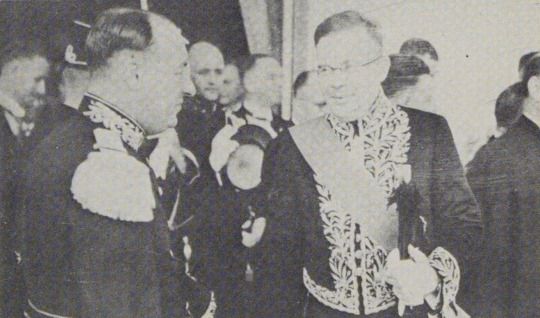





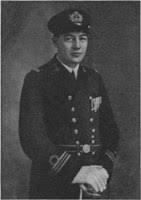
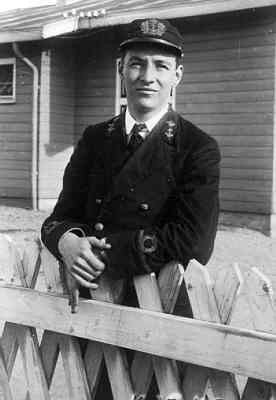

#Karel Doorman#Nederlandsch-Indië#WW2#ww2 history#allied forces#dutch east indies#colonialism#Ik hou ervan dat een van zijn tweede namen 'Marie' is#het is mijn favoriete ding ooit. Ik hou zo veel van hem#hij is letterlijk mijn prinses
3 notes
·
View notes
Text

Dutch author Hellas S. Haasse
#Hella S. Haasse#Haasse#Hella S Haasse#Dutch#The Netherlands#Netherlands#Holland#Batavia#Jakarta#Indonesia#Indonesian#Dutch-Indonesian#1918#1910's#1900's#2010's#2011#2000's#Amsterdam#Oeroeg#Dutch East Indies
4 notes
·
View notes
Text

Studio portrait of a Klingalese woman.
Stafhell & Kleingrothe (Fotostudio), 1890-1905.
4 notes
·
View notes
Text
#nations of the world tournament#polls#poll#propaganda encouraged#nations of the world retro#nations of the world 1914#Ascension island#dutch east indies
0 notes
Text
The Coffee Legacy of the Dutch East Indies
COLLECTION TROPENMUSEUM Sorting coffee beans in a warehouse at the coffee and rubber company Tretes Panggoeng The history of coffee plantations in the Dutch East Indies (present-day Indonesia) is closely tied to the colonial economy. It is also linked with global trade. Here’s an overview based on historical records: 1. Introduction of Coffee to the Dutch East Indies – Coffee was…

View On WordPress
0 notes
Video
youtube
NUTMEG: The Horrible History Behind The Popular Spice
0 notes
Text
@sonjolras
There is a direct connection between the expansion of [...] new [coffee] consumer culture in Europe [...] and the expansion of plantation slavery in the Caribbean. [...] [S]lave-based coffee was more important to the Dutch [Netherlands] economy than previously [acknowledged] [...]. [T]he phenomenal growth of [plantation slavery in] Saint Domingue [the French colony of Haiti] was partly made possible by the export market along the Rhine that was opened up by the Dutch Republic. [...] [E]arly in the eighteenth century, the Dutch and French began production in their respective West Indian colonies [...]. [C]offee was still a very exclusive product in Europe. [...] From the late 1720s, [...] in the Netherlands [...] coffee was especially widespread [...]. From the late 1750s the volume of Atlantic coffee production [...] increased significantly. It was at that time that the habit of drinking coffee spread further inland [...] [especially] in Rhineland Germany [...] [and] inland Germany [due to Dutch shipments via the river].
Although its consumption may not have been as widespread as the tea-sugar complex in Britain, there certainly was a similar ‘coffee-sugar complex’ in continental Europe [...] spread during the eighteenth century [...]. The total amount of coffee imported to Europe (excluding the Italian [...] trade) was less than 4 million pounds per year during 1723–7 and rose to almost 100 million pounds per year around 1788 [...]. In 1790 [...] almost half of the value of [Dutch] exports over the Rhine [to Germany] was coffee. [...]
---
The rising prices in the 1760s encouraged more investment in coffee in Dutch Guiana and the start of new plantations in Saint Domingue [Haiti]. Production in Saint Domingue skyrocketed and surpassed all the others, so that this colony provided 60% of all the coffee in the world by 1789. [Necessitating more slave labor. The Haitian revolution would manifest about a decade later.] [...]
In French historiography, the ‘Dutch problems’ are considered to be the slave revolts (the Boni-maroon wars) [at Dutch plantations]. [...] France made use of the Dutch ‘troubles’ to expand its market share and coffee production in Saint Domingue [Haiti], which accelerated at an exponential rate. [...]
---
[T]he Dutch Guianas [were] producing over a third of the coffee consumed in Europe [...] [by] 1767. [...] The Dutch flooded the Rhine region with coffee and sugar, creating a lasting demand for both commodities, as the two are typically consumed together. [...] [T]he history of the slave-based coffee production in Surinam and Saint Domingue [Haiti] was pivotal in starting the mass consumption of coffee in Europe. [...] Slave-based coffee production was also crucial [...] in Brazil during the 'second slavery', where slavery existed on an enormous scale and was reshaped in the world's biggest coffee producing country [later] during the nineteenth century. [...] The Dutch merchant-bankers organised coffee investment, enslavement, and planting and selling; [all] while not leaving the town of Amsterdam [...].
[This market] expansion ends in crisis [...] - a crisis caused by uprisings and revolutions, most notably, the Haitian one. Yet Germans still liked coffee. And the Dutch colonial merchant-banker[s] [...] learned something about [...] production, and perhaps also something about the role of the state in labour control: as soon as they could, they sent Johannes van der Bosch [Dutch governor-general of the East Indies] to Surinam and Java in order to solve the labour issues and expand the colonial production of coffee [by imposing in Java the notoriously brutal cultuurstelsel "enforced planting" regime, followed later by the "Coolie Ordinance" laws allowing plantation owners to discipline "disobedient" workers, with millions of workers on Java plantations, lasting into the twentieth century].
---
Text above by: Tamira Combrink. "Slave-based coffee in the eighteenth-century and the role of the Dutch in global commodity chains". Slavery & Abolition Volume 42, Issue 1, pages 15-42. Published online 28 February 2021. [Bold emphasis and some paragraph breaks/contractions added by me. All of that italicized text within brackets was added by me for clarity and context; apologies to Combrink. Presented here for commentary, teaching, criticism.]
#Tamira Combrink#Slave-based coffee in the eighteenth-century and the role of the Dutch in global commodity chains#Slavery & Abolition#The Netherlands#Dutch West Indies#Haiti#Ayiti#Slavery#Dutch East Indies
128 notes
·
View notes
Text
Cox was an Englishman with capital whose dream – shared by many Top End squatters – was to sell beef and horses to India and the Dutch East Indies.
"Killing for Country: A Family History" - David Marr
#book quote#killing for country#david marr#nonfiction#dillon cox#englishman#capital#dreams#top end#nt#northern territory#australia#squatter#beef#cattle#horses#india#dutch east indies
0 notes
Text

Cute
1 note
·
View note
Text
#railway#roadways#railroad#train#Dutch East indies#lembah Anai#west Sumatra#timeline#indonesian history#history#transportation#rail bridge
1 note
·
View note
Text

A Douglas A-20 Havoc of the U.S. Army 5th Air Force flies away from the havoc it has just wrought on an oil storage tank at Boela on the Island of Ceram, Dutch East Indies.
#wwii#Dutch East Indies campaign#pacific theater#strategic bombing campaign over the pacific#aviation
125 notes
·
View notes
Text

Office building of the Dutch East Indies Railway Co. in Semarang, Java, Indonesia
Dutch vintage postcard
#tarjeta#office#postkaart#sepia#indies#carte postale#east#ansichtskarte#dutch#the dutch east indies railway co.#semarang#briefkaart#photo#photography#postal#postkarte#vintage#postcard#historic#railway#building#indonesia#java#ephemera
7 notes
·
View notes
